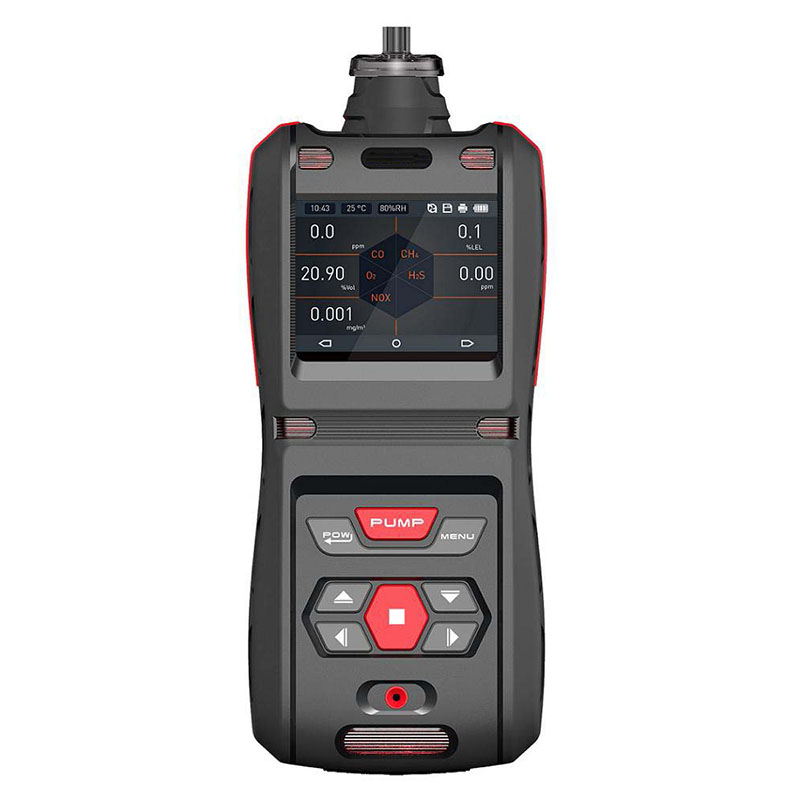- English
- Español
- Português
- русский
- Français
- 日本語
- Deutsch
- tiếng Việt
- Italiano
- Nederlands
- ภาษาไทย
- Polski
- 한국어
- Svenska
- magyar
- Malay
- বাংলা ভাষার
- Dansk
- Suomi
- हिन्दी
- Pilipino
- Türkçe
- Gaeilge
- العربية
- Indonesia
- Norsk
- تمل
- český
- ελληνικά
- український
- Javanese
- فارسی
- தமிழ்
- తెలుగు
- नेपाली
- Burmese
- български
- ລາວ
- Latine
- Қазақша
- Euskal
- Azərbaycan
- Slovenský jazyk
- Македонски
- Lietuvos
- Eesti Keel
- Română
- Slovenski
- मराठी
- Srpski језик
How to Choose the Right Oxygen Detector?
2025-09-30
Oxygen is an essential gas for life, and its concentration is directly related to personnel safety, process stability, and even equipment lifespan. From deep within mines to high altitudes, from chemical plants to medical facilities, oxygen detectors constantly monitor oxygen levels in the environment. So, do you know how to choose the right oxygen detector? Below, our editors from Zetron Technology Electronics will explain:

1. Clarify the Purpose and Scenario of Monitoring
Long-term Online Monitoring: If you need 24/7 monitoring of oxygen concentrations in a fixed location (such as a chemical plant, mine ventilation vents, enclosed storage tank areas, or medical oxygen therapy rooms), a fixed oxygen detector is an ideal choice. These are typically mounted on walls or pipes, providing continuous data logging and often with remote transmission capabilities for centralized management.
Temporary Inspections and Emergency Response: If you need to conduct temporary monitoring at various locations or enter unknown risk areas (such as before working in a confined space), a portable oxygen detector is more suitable. They are compact and easy to carry, and often feature a pump function, allowing monitoring in more remote or inaccessible locations.
Personal Protection: For personal safety reasons, if you need to constantly monitor your surrounding oxygen concentration, a wearable (personal) oxygen monitor is the best choice. It can be worn on your chest or attached to a helmet, providing constant alerts about your personal environment.
2. Understanding Core Technologies
Electrochemical Sensors: Currently the most commonly used type, these offer high sensitivity and relatively low cost, making them suitable for most environments. However, they have a limited lifespan and are susceptible to humidity and temperature, requiring regular calibration.
Paramagnetic/Zirconium Oxide Sensors: These sensors offer excellent stability and high accuracy, making them particularly suitable for high-precision measurements and harsh environments. However, they are more expensive and have a relatively complex structure.
Optical/Laser Sensors: These are newer technologies with advantages such as strong anti-interference capabilities and a long lifespan, but are generally more expensive and are primarily used in specialized or high-end applications.
For most general applications, electrochemical sensors are a cost-effective option, but their lifespan and calibration requirements should be considered.
3. Verify Key Parameters
Measurement Range: Confirm that the instrument's range covers your expected oxygen concentration range (typically, the oxygen concentration in air is around 20.9%, lower than 19.5% in an oxygen-deficient environment, and higher than 23.5% in an oxygen-rich environment).
Accuracy and Response Time: Accuracy determines data reliability, while response time determines the ability to provide timely warnings of danger. Select an appropriate accuracy level based on the criticality of your application.
Explosion-Proof and Protection Rating: If the operating environment contains flammable or explosive gases or dust, select an instrument with appropriate explosion-proof certification (such as Ex) and an adequate protection rating (such as IP65/IP67).
Alarm Function: Confirm whether the instrument has high/low limit alarms, whether the alarm methods (sound, light, vibration) are clear and effective, and whether the alarm points are adjustable.
4. Consider Other Factors
Brand and Certification: Choosing a reputable brand generally means more reliable quality and better after-sales service. Confirm whether the instrument has relevant safety certifications (such as CE, ATEX, etc., depending on the application area). Sampling Method: Natural diffusion relies on the natural flow of gas and has a simple structure; pump-assisted sampling can actively extract gas from distant or low-concentration areas, extending the detection range.
Operational Ease and Maintenance: Consider user-friendly interface, ease of operation, battery life, ease of calibration and maintenance, etc.
Budget: While meeting functional requirements, consider your budget to determine the most economical choice.
In summary, choosing an oxygen detector requires comprehensive consideration. It's recommended that you first clarify the purpose and scenario of the test and determine the instrument type. Then, select the appropriate sensor technology based on the primary application environment. Next, carefully examine key parameters such as measurement range, accuracy, and explosion-proof rating. Finally, consider factors such as brand, certification, maintenance costs, and budget.







